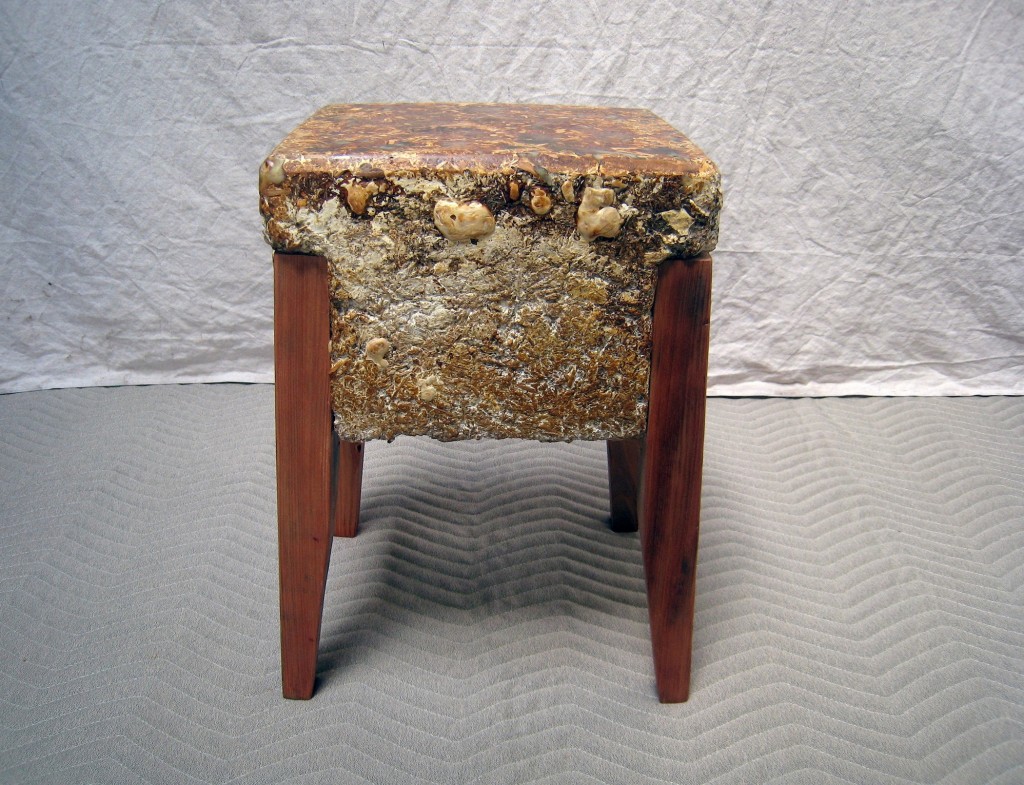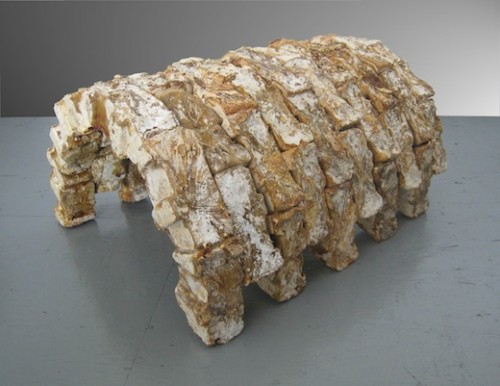
Philip Ross’s “Mycotecture” series, part of the Williamson Gallery’s “Intimate Science” exhibition.
Bricks. You know, those hard rectangular cubes made of heavy solid stuff like cement, stone, concrete, rock . . . and fungus. Yes, fungus. Clean, lightweight, extremely durable, sustainable, (dead) fungus. There’s a sculpture made of those fungal bricks shaped into a half-arc tunnel – not to mention two fungus-grown chairs – on display in the Williamson Gallery’s current exhibitionIntimate Science (through August 18).
Known for its curatorial connections to the burgeoning ArtScience movement, the Williamson Gallery’s recent projects have extended this theme to include artists who are productively reckless when considering the boundaries between traditional domains. Stitching together performance, installation art, design, citizen science, and maker-ingenuity into a complex fabric of artistic practice, ArtScience artists are challenging older single-channel paradigms.
Originally organized by curator Andrea Grover for Carnegie Mellon University’s Miller Gallery and now on a national tour, Intimate Science includes a compelling assemblage of crossover objects and intentions. The exhibition’s stop at the hillside campus has brought works by artists from London, Seattle, San Francisco, Pittsburgh, and Tokyo to join hometown L.A. participant Machine Project in provoking students, faculty, staff and a stream of inquisitive visitors.
Two recent workshops organized by Machine Project transformed a section of the gallery into an interactive learning lab for unconventional artistic palettes. Attendees examined processes that might inform future hybrid projects by harnessing the behavior of sound vibrations and twisting auditory perceptions, and interfacing with the dynamics of electricity and the natural flow of current in the human body.
At the exhibition’s opening reception on May 30, scientists from Caltech and Jet Propulsion Lab mixed with artists, designers, writers, students, faculty, and the generally curious. Carnegie Mellon’s Astria Suparak remarked on bringing the exhibition to Art Center’s gallery: “We were thrilled to open Intimate Science at the Williamson Gallery — to have the opportunity to bring the gallery’s work to Los Angeles, to be seen by a wider audience and have a larger impact.”


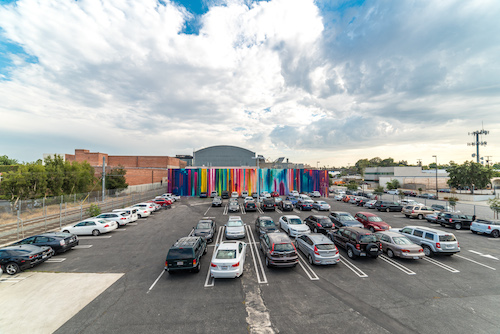

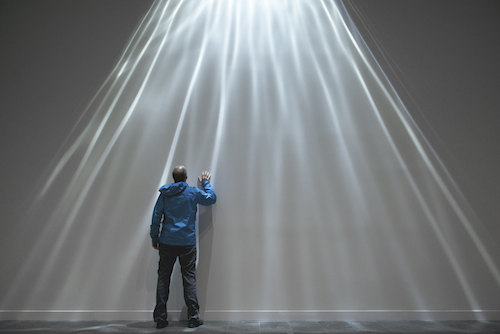
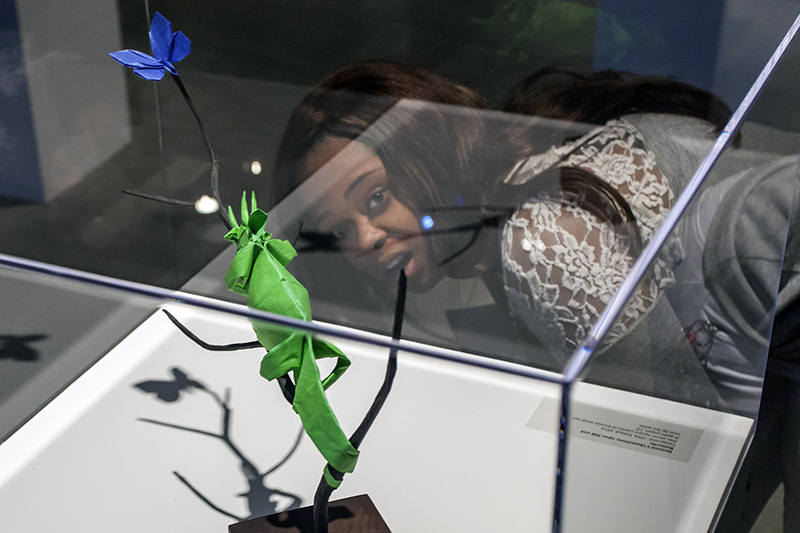

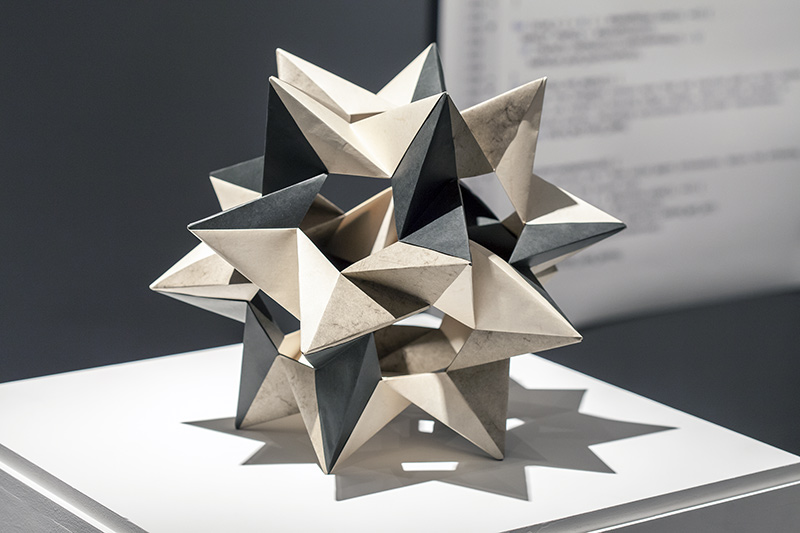
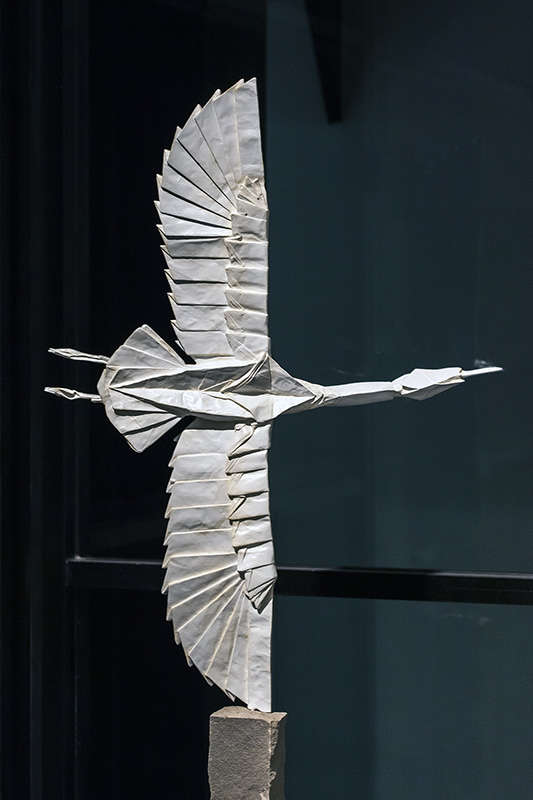
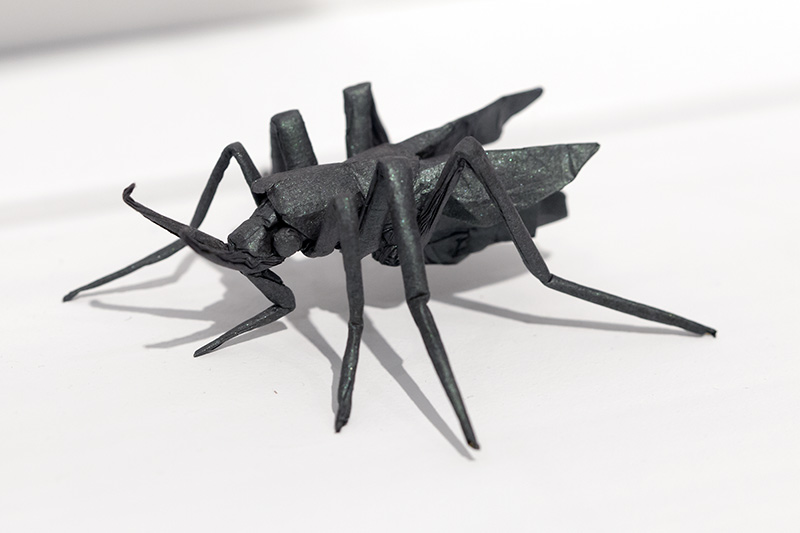
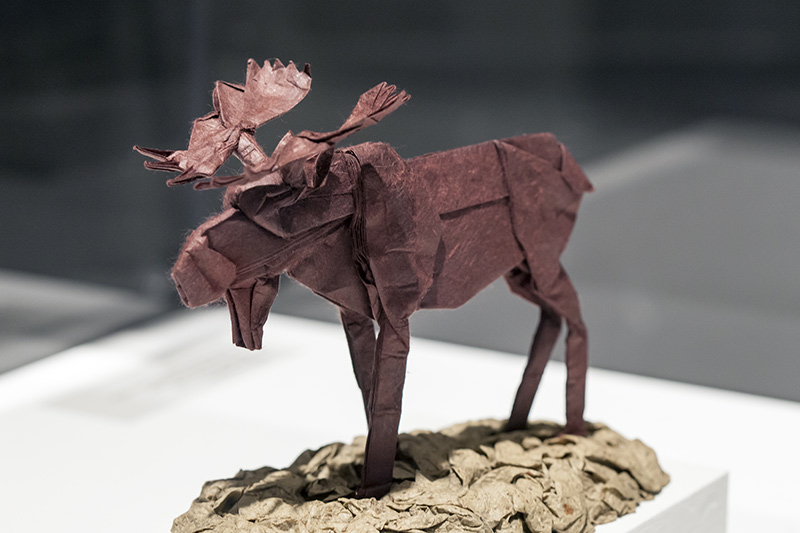
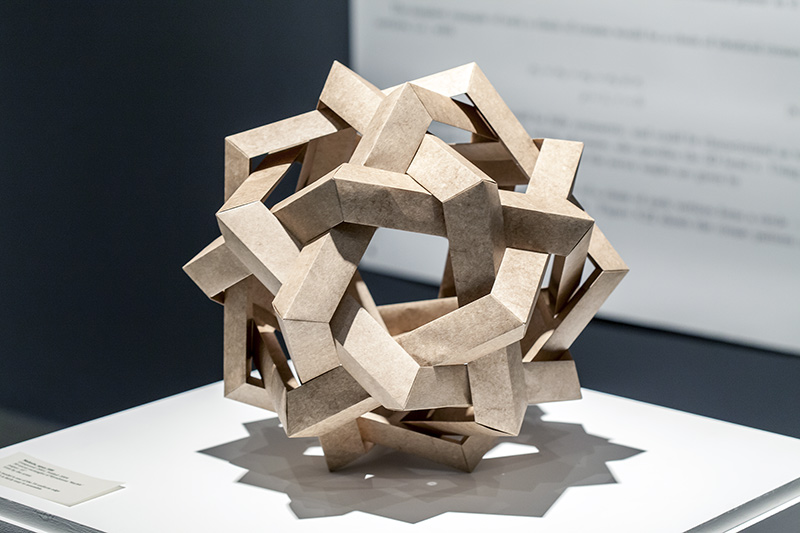
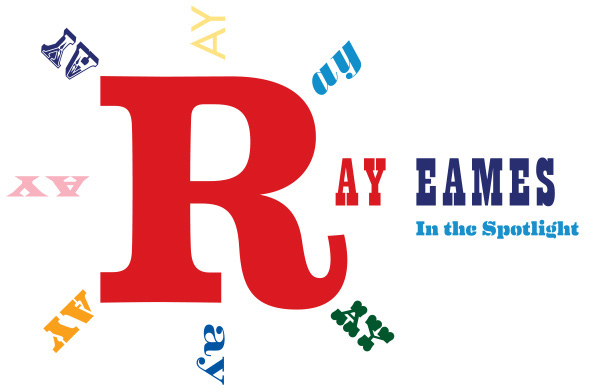
![accd_2004.26.1048.2_n_a[2]](http://blogs.artcenter.edu/dottedline/wp-content/uploads/2014/02/accd_2004.26.1048.2_n_a2.jpg)
![accd_2004.26.1047.33_n_a[1]](http://blogs.artcenter.edu/dottedline/wp-content/uploads/2014/02/accd_2004.26.1047.33_n_a1.jpg)
![accd_2004.26.1046.2_n_a[1]](http://blogs.artcenter.edu/dottedline/wp-content/uploads/2014/02/accd_2004.26.1046.2_n_a1.jpg)
![accd_2004.26.1042.1_n_a[1]](http://blogs.artcenter.edu/dottedline/wp-content/uploads/2014/02/accd_2004.26.1042.1_n_a1.jpg)
![accd_2004.25.3125.9_p_a[1]](http://blogs.artcenter.edu/dottedline/wp-content/uploads/2014/02/accd_2004.25.3125.9_p_a1.jpg)

